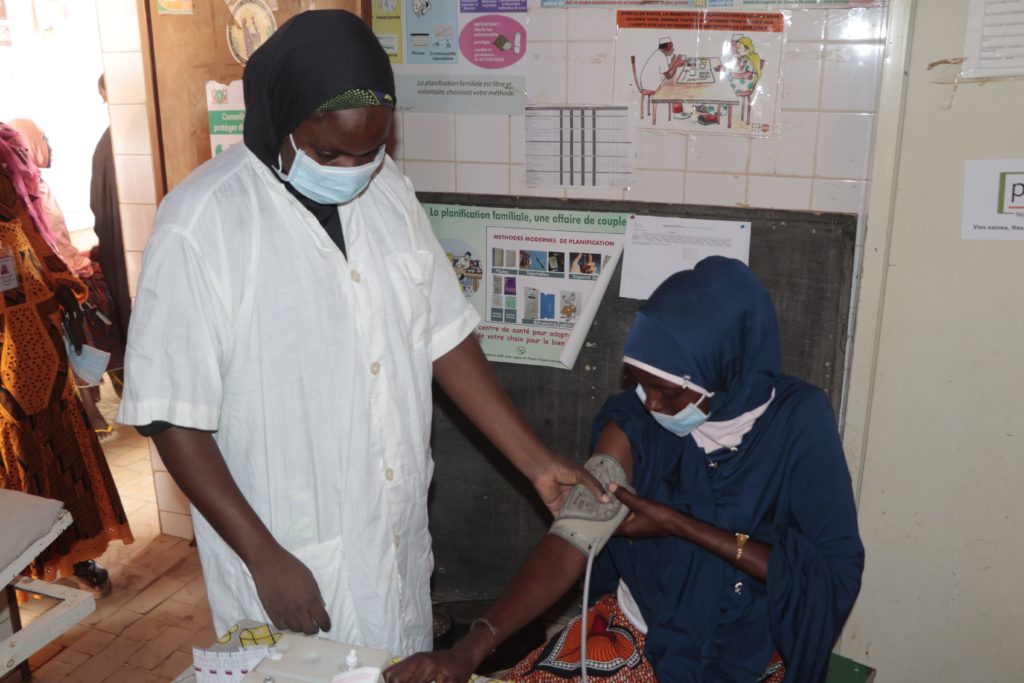Lessons for Integrated Social and Behavior Change Programming
Exploring Family Planning, Maternal and Child Health, and Nutrition Behavioral Determinants in Niger

Integrated social and behavior change (SBC) programs aim to influence multiple health and development areas through coordinated approaches that address factors including knowledge, attitudes, and norms. They have the potential to reduce duplication and costs, avoid missed opportunities, ensure access to timely and appropriate services and information, and achieve better outcomes. SBC integration is already happening across many health sectors, yet the evidence base to promote its implementation is limited. In contributing to a global Research and Learning Agenda on integrated SBC programming, Breakthrough RESEARCH, USAID’s flagship SBC evidence generation project, is helping generate data to enhance this important approach.
Cliquez ici pour lire la version française de cet article.
Important new integrated SBC evidence is emerging from Resilience in the Sahel Enhanced (RISE) II, a USAID-funded program working in the Sahel region of Burkina Faso and Niger. RISE II seeks to address priority behaviors and health outcomes in maternal, newborn, and child health; family planning (FP); nutrition; and water, sanitation, and hygiene through integrated SBC development programming alongside humanitarian assistance. Breakthrough RESEARCH has conducted mixed-methods analyses of integrated SBC implementation in the Maradi and Zinder regions of Niger, gathering information about its success and cost-effectiveness in this resource-constrained and drought-prone area.
Qualitative study on household decision-making for health issues
In Niger, high fertility rates and persistent malnutrition contribute to one of the highest child mortality rates in the world. Gender inequality and lack of decision-making power are challenging for FP promotion efforts, and there is limited evidence from Niger focused on addressing the gendered dimensions of integrated SBC approaches. Breakthrough RESEARCH conducted a qualitative study exploring partner communication and household decision-making across priority health issues—child health, nutrition, and family planning—to better understand the role of gender norms and family dynamics.
Figure 1 presents four of the study’s key takeaways about intra-household decision-making. In identifying three decision-making pathways that entail varying degrees of involvement and agency for women, these results suggest the importance of amplifying female participation. Expanding on the role that women often play in initiating health-related conversations, these interviews signal the importance of shifting toward a dynamic of joint or collaborative decision-making and power-sharing. Understanding the varying roles of spouses, family members, and others depending on health topic reinforces the importance of employing flexible, tailored engagement and communications approaches— for instance, while grandparents may be closely involved in child nutrition decisions, family planning decisions are often made between couples or spouses. Closely related, our findings indicate that male engagement groups are a promising approach to increase men’s knowledge and awareness on health-related issues and increase spousal communication. Reaching couples through home-based counseling could prove a valuable complementary approach. Finally, community-level SBC interventions that de-stigmatize malnutrition by sharing strategies with all parents could help support child health and nutrition in food-scarce settings and facilitate better communication between spouses.
Creating reproductive and maternal health behavioral profiles for women of reproductive age
Effective SBC interventions frequently incorporate audience segmentation, the practice of dividing an audience into subgroups based on demographic, , and/or behavioral factors to develop customized approaches. While widely used in FP and HIV interventions, audience segmentation for reproductive and maternal health SBC programs (beyond socio-demographic characteristics) has been limited . Breakthrough RESEARCH interviewed over 2,700 married women of reproductive age in Niger, then used a latent class analysis incorporating five socio-demographic and behavioral determinants (knowledge, attitudes, norms, self-efficacy, and partner communication, as described in Figure 2) to develop profiles related to three healthcare-seeking behaviors: antenatal utilization, facility-based delivery, and use of modern FP.
Latent class analysis allows us to move beyond focusing on one characteristic at a time (e.g., age) and instead uses multiple characteristics to identify relationships within the data that provide a more nuanced understanding of audience profiles. To help describe some of the profiles generated through this analysis, we developed personas. These fictional characters represent different women of reproductive age in Niger who might use FP and maternal health services in a similar way to our study participants.
We describe three personas to illustrate the audience profiles that emerged from our analysis:

Aissatou is less likely to use antenatal care services than other women in Niger. Compared to the average woman in Niger, Aissatou is younger, has never attended school, and is poor. She believes women only need antenatal care if they are sick and does not believe that other pregnant women in her community attend four or more antenatal care visits. Aissatou is less likely than other women in our study area to believe that she can access antenatal care services. Approximately 29% of the women we interviewed were similar to Aissatou.

Bintou is more likely to use facility delivery services than other women in Niger. While Bintou is poorer and less educated than most women in our study area, she has positive attitudes about a health facility being the best place to give birth. Bintou is also more likely to believe that it is not at all difficult to speak to her husband about delivering in a facility. However, her beliefs may be different from others in her community, where she believes most women do not deliver in a facility. Approximately 12% of the women we interviewed were similar to Bintou.

Fatou is more likely to use family planning than other women in Niger. Fatou is a young, educated Nigerien woman. She believes it is acceptable to use FP methods and knows where to obtain them. She also believes women in her community feel it is acceptable for women to use FP methods. Approximately 21% of the women we interviewed were similar to Fatou.
Implications
These personas provide information that can inform more nuanced SBC strategies to increase the use of maternal and reproductive health services. For example, for a user such as Bintou, who already has a positive attitude towards delivery services and is able to communicate with her partner about using them, SBC strategies may need to focus more on addressing social norms by reaching community leaders to create an environment where women feel supported to use delivery services.
Our FP audience persona, Fatou, is a young, educated woman who is able to speak to her partner about FP methods and knows where to find them. In a traditional society such as Niger, where the median age at first birth is below 18, young women like Fatou can serve as positive deviants who are able to influence community members who are more resistant to trying FP methods.
Breakthrough RESEARCH’s ongoing evaluation aims to answer the following questions to enhance integrated SBC interventions in the Sahel:
- How do RISE II activities use audience profiles to ensure programs are effectively reaching the most marginalized?
- How can RISE II activities address behavioral determinant misalignment, where audiences have positive attitudes but believe social norms do not support positive behaviors?
- Can RISE II SBC activities leverage audience members with strong behavioral determinants (such as young women) to influence those who may have weaker behavioral determinants?
Further Reading
For more information, the project has recently published the following journal articles:
- “When you live in good health with your husband, then your children are in good health ….” A qualitative exploration of how households make healthcare decisions in Maradi and Zinder Regions, Niger
- Creating Reproductive Health Behavioral Profiles for Women of Reproductive Age in Niger Using Cross-Sectional Survey Data: A Latent Class Analysis




